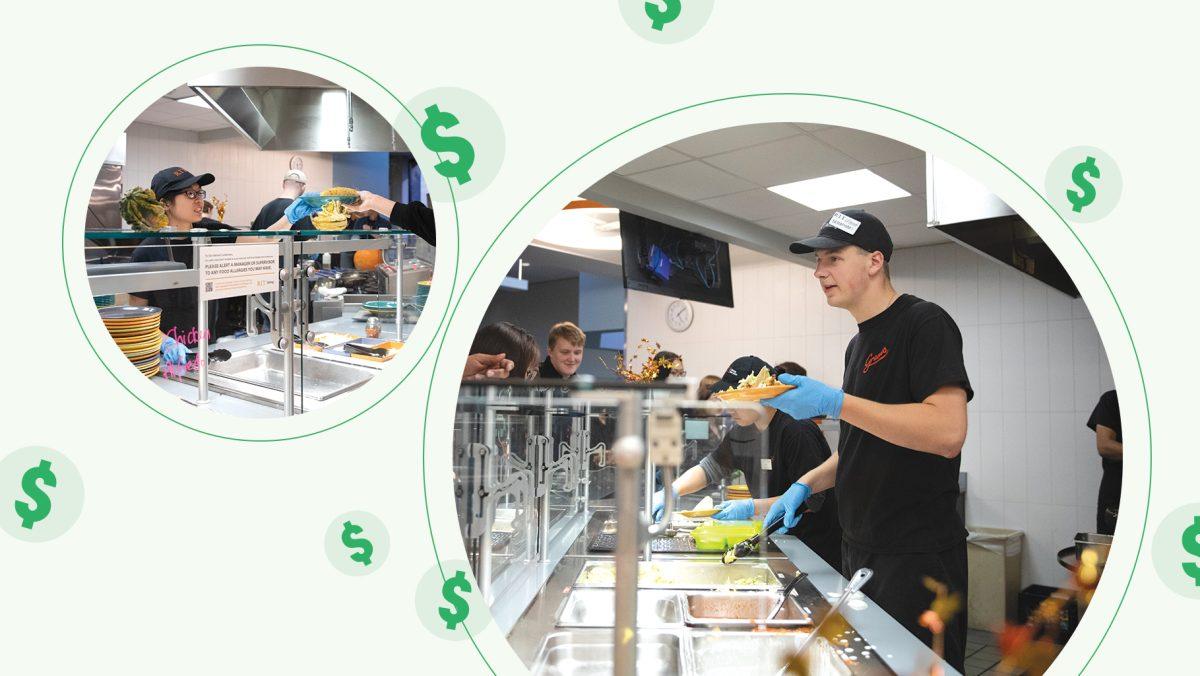When dinner choices at Gracie’s are between hot dogs with french fries and chicken with vegetables, it’s tempting to gravitate toward the former. Elle Woodworth, a registered dietitian in Rochester, N.Y., understands the dilemma.
“[Eating healthy] is difficult for everyone, but especially when you’re in a dining hall and you have a finite number of choices,” Woodworth said. “We don’t want improper nutrition to be another barrier, whether that’s socially fitting into a new crowd or being able to learn with a rigorous schedule.”
Inadequate nutrition can lead to worsened focus, poor sleep and lower physical performance, Woodworth said. Making healthy choices provides us with the energy and nutrients we need to succeed.
Establishing Healthy Habits
Alex Denn, a third year Economics major and Army ROTC cadet, understands how tricky it can be to eat well in a dining hall.
“Make sure you’re keeping a regular eating schedule … getting in the calories is really important for having energy for when you’re doing sports, homework,” Denn said. “A lot of [eating well] is establishing habits … you’ve just gotta be willing to push through those initial stages.”
“A lot of [eating well] is establishing habits.”
Instead of fried foods and sugary cereals — which are high in fat and sugar and can make your body feel hungry quicker — try eating fruits, vegetables, proteins and whole grains. You also have to be willing to stock your dorm with healthier snacks and quick meal options.
Dorm-Friendly Pantry Staples
Fresh fruits and vegetables are the optimal healthy decision; however, Woodworth understands that these foods can be harder to store for longer periods.
Granola bars, trail mix and peanut butter and jelly on whole-wheat bread are some of Denn’s go-to snacks. Woodworth suggested trying fruit-and-oat or fruit-and-chia cups — they are full of protein and natural sugars and require zero prep.
She also recommends old-fashioned oats for a microwave-friendly, whole-grain breakfast option. You can add a few chocolate chips and a scoop of peanut butter to make it taste like a treat.
Tuna and chicken packets are a shelf-stable protein you can add to a salad or pair with minute rice, Woodworth said. Reese Harvest Bowls are another good, vegan-friendly option full of grains and vegetables.
“Any of that kind of stuff is going to be better than a hot pocket or toaster strudels,” Denn said.
Making Nutritious Decisions
For additional guidance, there are online resources that can help you create healthy meals, such as MyPlate. You can also make an appointment with the campus dietitian.
It can be hard to make healthy choices when your friends may or may not be doing the same. Ultimately, you need to make sure you are filling your body with nutrition-packed options to keep yourself healthy and energized.
“A lot of times when I am speaking with patients, I try to emphasize making decisions that are right for your own body,” Woodworth said. “Remind yourself that just because somebody else is making that choice doesn’t mean that it’s the right one for you.”







